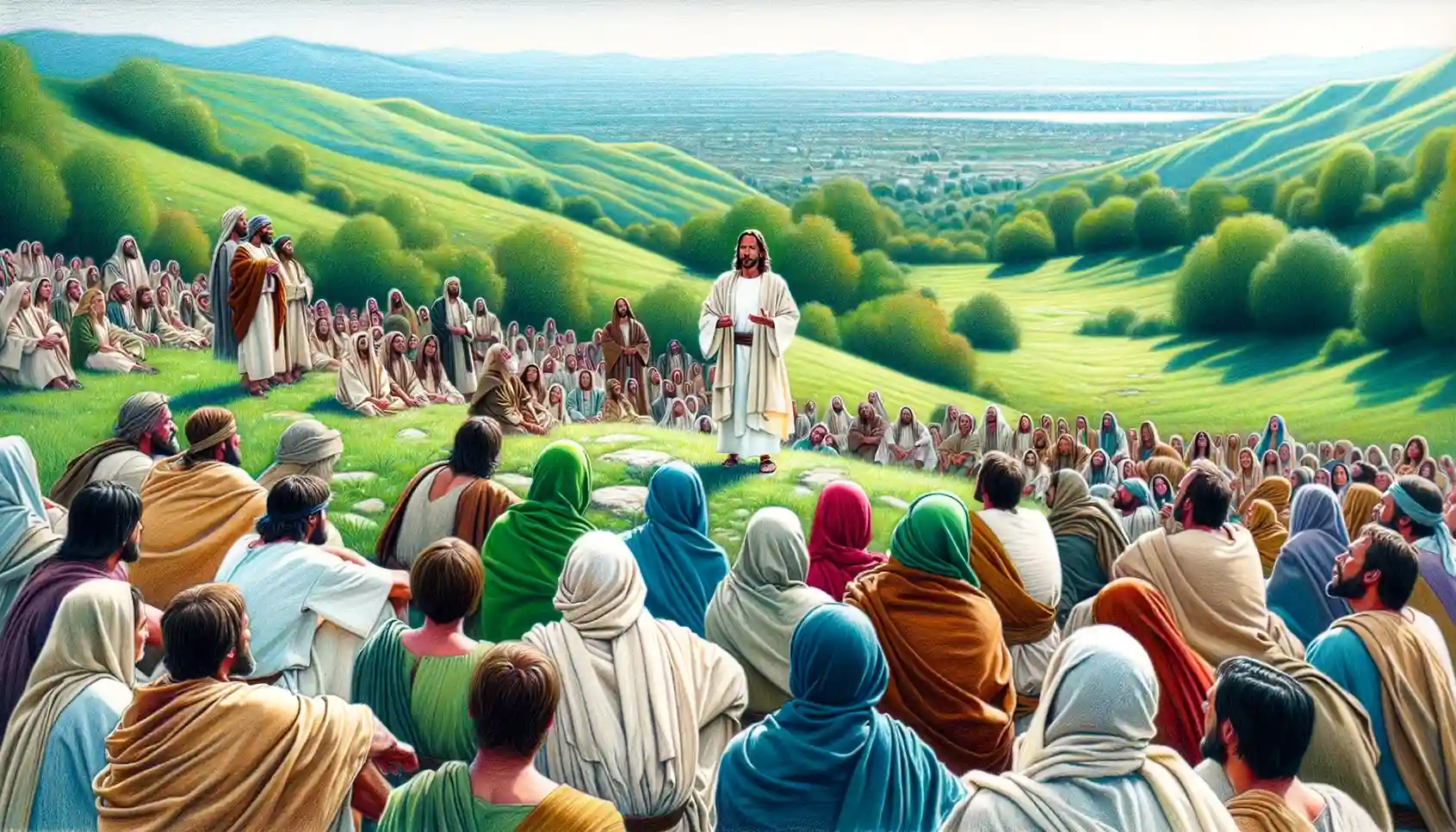
The Sermon on the Mount
The Sermon on the Mount is one of the most significant and widely quoted sections of the New Testament, containing a collection of teachings and sayings of Jesus Christ. This sermon is found in the Gospel of Matthew, chapters 5 through 7, and it presents the core of Jesus’ moral teachings. Here are some quick facts about the Sermon on the Mount:
- Location and Audience: The sermon was delivered on a mountainside near Capernaum in Galilee, primarily to Jesus’ disciples although a larger crowd was also present.
- Key Themes:
- The Beatitudes: These are a series of blessings pronounced by Jesus at the beginning of the Sermon, each beginning with “Blessed are…” They address the spiritual and moral virtues such as meekness, mercy, purity, and peacemaking.
- Ethical Teachings: Jesus expounds on the law, emphasizing the spirit rather than the letter of the law. He intensifies the Old Testament commandments and teaches about anger, lust, divorce, and oaths.
- Spiritual Practices: Instructions on giving, prayer, and fasting are provided, highlighting the importance of sincerity and humility in one’s spiritual life. The Lord’s Prayer is part of this teaching.
- The Golden Rule: “Do unto others as you would have them do unto you” (Matthew 7:12) summarizes the ethical teachings of Jesus in the sermon.
- Theological Significance: The Sermon on the Mount is often considered a concise summary of Christian ethics and Jesus’ teachings. It challenges believers to live a righteous life and reflects the expected behavior of the followers of Jesus.
- Interpretation: The sermon has been interpreted in various ways throughout Christian history. Some view it as a description of the character of people in the kingdom of heaven, while others see it as a guide for Christian living in the world.
- Impact on Literature and Society: Its influence extends beyond religious contexts, impacting Western legal and cultural norms, as well as inspiring numerous works of literature, philosophy, and theology.
The Sermon on the Mount, primarily found in Matthew chapters 5 through 7, is a rich and complex text that offers deep insights into Christian ethics, morality, and discipleship. Its teachings reflect a radical reorientation of both heart and behavior, urging listeners to transcend traditional interpretations of the Law of Moses and to embrace a more profound spiritual commitment. Here’s a detailed analysis of its key components and theological implications:
1. Context and Setting
Jesus delivers this sermon at the beginning of His ministry, signaling its importance as a foundational declaration of His teachings. The setting on a mountain is symbolically significant, echoing Moses receiving the Law on Mount Sinai. This parallel positions Jesus as a new lawgiver, who not only interprets but fulfills the law.
2. Structure and Content
The Sermon can be divided into several sections, each focusing on different aspects of Christian life:
- The Beatitudes (Matthew 5:3-12): These open the sermon, describing the characteristics and virtues of those who belong to the Kingdom of Heaven. Each beatitude begins with “Blessed are…” and promises future blessings or rewards.
- Salt and Light (Matthew 5:13-16): This metaphor emphasizes the role of Christians in the world—to influence and preserve goodness and to illuminate truth through righteous living.
- Fulfillment of the Law (Matthew 5:17-20): Jesus clarifies that His teachings are not to abolish the Law but to fulfill it. He introduces a righteousness that exceeds that of the Pharisees, focusing on inward purity rather than outward compliance.
- Antitheses (“You have heard that it was said… But I say to you…” Matthew 5:21-48): Jesus intensifies six aspects of the law, addressing issues like anger, lust, divorce, oaths, retaliation, and love for enemies. This section highlights His call to internal transformation rather than mere external adherence.
- Piety Practices (Matthew 6:1-18): Jesus discusses almsgiving, prayer, and fasting, warning against performing religious duties for public admiration. He teaches the Lord’s Prayer as a model of sincere, humble prayer.
- Discipleship and Dependence (Matthew 6:19-34): This part focuses on trust in God rather than worldly anxiety, urging followers to seek first the Kingdom of God and His righteousness.
- Judging Others and Persistence in Prayer (Matthew 7:1-12): Jesus advises against hypocritical judgment and encourages persistence in seeking God’s help, encapsulated by the Golden Rule.
- Conclusion: The Wise and Foolish Builders (Matthew 7:24-27): The sermon ends with a parable that contrasts the outcomes of those who hear and obey Jesus’ teachings versus those who do not, emphasizing the practical implications of His teachings.
3. Theological Significance
The Sermon challenges its hearers to consider their motives, attitudes, and the depth of their spiritual commitment. It describes the radical ethos of the Kingdom of Heaven, contrasting it with both Jewish legalism and pagan moral indifference. The emphasis on internal righteousness anticipates the transformative work of the Holy Spirit, a central tenet of Pauline theology.
4. Historical and Cultural Impact
The Sermon on the Mount has profoundly influenced Christian thought and practice, inspiring movements and individuals dedicated to living out its principles. It has also permeated broader philosophical discussions about ethics, governance, and human rights, underscoring its universal relevance and appeal.
In sum, the Sermon on the Mount is not merely an ethical guide but a profound spiritual manifesto that calls believers to a higher standard of living and thinking, shaped by the person and teachings of Jesus Christ. It remains a cornerstone of Christian ethics and spirituality, challenging each generation to live out the values of the Kingdom of Heaven.



